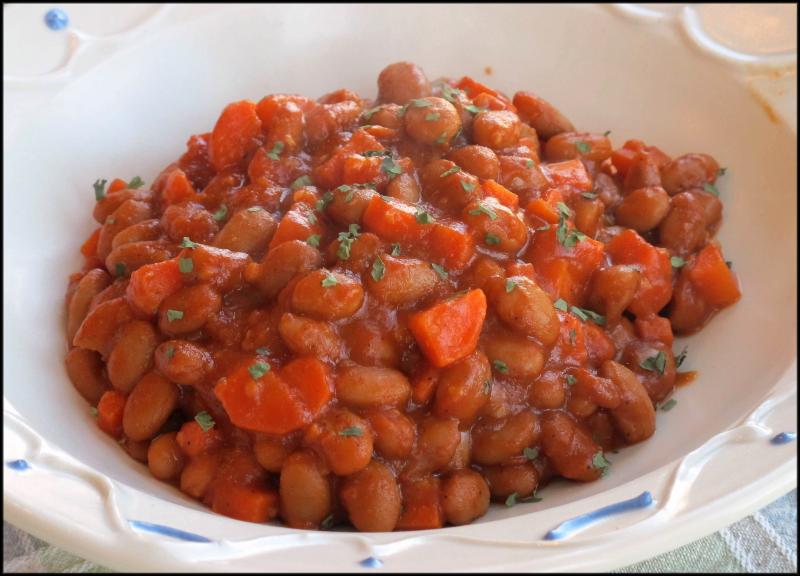Food focus on legumes
According to recent posts and published articles from food bloggers and pundits alike, it appears the food focus this year is on legumes. By definition, any plant that grows pods is considered a legume, but the prize is what’s inside – the edible seed known as a “pulse.”
Their name comes from the Latin root “puls” which can refer to porridge made from beans. Familiar examples of pulses include split peas, lentils, chickpeas, peanuts and beans. Pulses are a food source that has been popular since ancient times and cultivated for centuries. They offer far more protein than cereal grains in a vitamin-rich, high-fiber, low-fat package.
If your only experience with beans was a can of sugary baked beans or the holiday green bean casserole, you’re missing a wonderful opportunity to enjoy the rich flavors and complex textures found in dishes that feature pulses. Although it is difficult to find them fresh, you can do quite well with the dried versions found in the grocery or opening a can from a reputable brand.
Much of the traditional lore about cooking beans has been disproven. For example, adding salt when cooking beans has been said to toughen them; this is not the case. If you’re soaking dry beans before cooking them, give them some salt for the soak and again when they’re added to the dish.
Soaking dry beans is another practice that may be unnecessary. For years, I would cold-soak beans overnight or quick-boil for a few minutes and soak for an hour. Soaking beans in the refrigerator overnight reduces the time they have to cook when you’re ready to assemble the dish. Their texture will also be excellent, with fewer split or burst specimens.
Only recently have I learned that this isn’t required, even if you’re not using an Instant Pot or pressure cooker to speed things along. Although beans that haven’t been pre-soaked will take longer to cook, the process of cooking them creates a “pot liquor” with an amazing depth of flavor, eliminating the need to add broth or stock.
What about canned beans? Although purists will insist that only the freshest dry beans will produce good results, I’ve had consistent success with canned beans. I’ve been reluctant to select from the packages of tired-looking dry beans on the grocery shelves (wishing I could find bags of New Orleans’ Camellia brand), instead reaching for cans of Goya or Bush’s.
A few things about canned beans to keep in mind. Always drain and rinse the beans, discarding the excess salt and tinny flavor found in the liquid. Pay close attention to the amounts when substituting canned for dry beans in a recipe. For every cup of dry beans, you’ll need to use two 15-ounce cans for the correct volume.
Watch your seasonings when using canned beans. Because you won’t be cooking them as long, you’ll have less time to develop flavor layers. You’ll want to be conservative with salt, and generous with other herbs and aromatics. If you’re planning to roast your beans, make sure they’re thoroughly dried first.
The dish of pinto beans and carrots in the photo was adapted from a recipe in a Mediterranean cookbook called “Beans and Friends.” Since I didn’t have ground coriander, I substituted garam masala for a lovely mixture of heat and sweet. Roasted chickpeas are an addictive snack; you’ll want to eat these right out of the oven, since they’ll soften as they cool. The final recipe is one that adapts to your tastes and what you may have on hand – a great way to feature pulses on the menu.
Carrot & Bean Stew*
1 T olive oil
3 garlic cloves
2 diced carrots
15-oz can pinto beans
1 t garam masala
1 T tomato paste
1/2 C vegetable broth
salt & pepper, to taste
1 T olive oil
1 t minced cilantro
Heat 1 T olive oil over medium-low in saucepan. Crush the garlic through a press into the pan and cook for a minute, stirring constantly. Add the carrots and cook for about 5 minutes, stirring often. Drain and rinse the beans and add to the saucepan. Sprinkle with garam masala; stir in tomato paste and broth. Cover and cook until tender, about 10 minutes. Stir regularly to keep from sticking. Season to taste with salt and pepper; stir in 1 T olive oil and garnish with cilantro. Yield: 4 servings. *Adapted from “Beans and Friends.”
Roasted Chickpeas
15-oz can chickpeas
1 T olive oil
1 t kosher salt
1 to 2 t spice*
Preheat oven to 400 F. Drain and rinse the chickpeas. Spread the chickpeas on paper towels and pat dry. Spread chickpeas on a rimmed baking sheet and drizzle with olive oil; toss to coat evenly. Sprinkle with salt and roast until golden and crispy, about 30 minutes, tossing every 10 minutes or so. Remove from oven and sprinkle with spices; serve immediately. *Choose from chili powder, curry powder, garam masala, smoked paprika or finely chopped fresh herbs.
Any Bean Salad
15-oz can beans
4 oz crumbled feta cheese
1 C halved cherry tomatoes
1/3 C diced red onion
1/2 C chopped cucumber
1/3 C vinaigrette or Italian dressing
salt & pepper, to taste
chopped parsley
Drain and rinse the beans; place them in a serving bowl. Add cheese, tomatoes, onion and cucumber. Drizzle with vinaigrette and toss to combine. Season to taste with salt and pepper; garnish with fresh parsley.























































